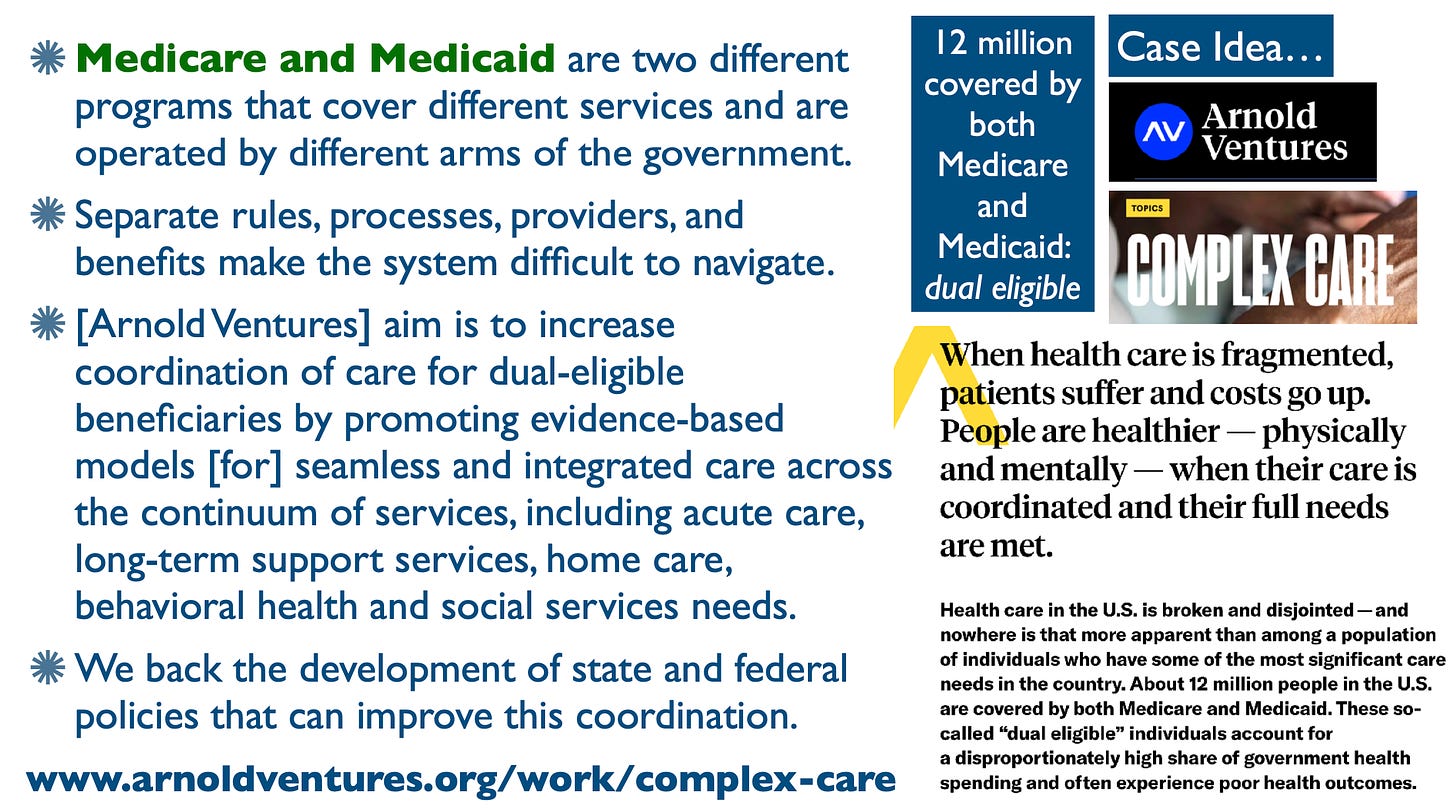Make America Metabolically Healthy Again
Consider contrasting stories of Medicaid services and access. One an article from the New York Times, the other a Medscape Commentary by Nina Teicholz. And also consider an Oregon study, discussed below, comparing thousands who gained access to Medicaid via a lottery and a similar number who didn’t.
Shared from Normal Nutrition Substack post.
Medicaid, launched in 1965, is a federal/state health care program for low-income families. State and federal costs for Fiscal Year 2024 are projected to be $800 billion.
As Medicaid Shrinks, Clinics for the Poor Are Trying to Survive (New York Times, February 24/March 1, 2024) reports on low-income families losing coverage and local hospitals impacted.
Through the 2020-2022 lockdown, Medicaid enrollment increased by over 20 million (Medicaid/CHIP enrollment is increasing amid the coronavirus pandemic, growing by 21.2 million enrollees or 29.8% from February 2020 to December 2022), and enrollment has been falling since: Medicaid enrollment has dropped by almost ten million, including around four million children…
So, twenty million increase in Medicaid access, followed by a ten million decrease. Expanding Medicaid access, like all federal spending, creates trade-offs. When medical services provided increases those costs have to be paid, but is the value of increased services higher than the costs?

Why no measured Medicaid benefits? Access to medical services increased, so people were diagnosed with high cholesterol levels, and “Medicaid coverage significantly increased the probability of a diagnosis of diabetes and the use of diabetes medication, but we observed no significant effect on average glycated hemoglobin levels or on the percentage of participants with levels of 6.5% or higher.”
What if Medicaid, then and now, is providing misguided medical advice and medications? Provision of diabetes medication is mentioned, but not recommending dietary changes (reducing carbohydrates and increasing fats, for example, as discussed in many NormalNutrition posts).
Affirmative cases for the Stoa debate topic on federal health care reform can propose reforming Medicaid and/or Medicare, the two largest federal health care programs. Dan Mitchell notes in (Fiscal Fights with Friends, December 7, 2022):
Medicaid’s split-financing model (some of the costs are paid by Washington and some of the costs are paid by states) creates a perverse incentive for politicians to make the program bigger.
The bottom line is that Medicaid needs to be fixed. That being said, not all reform proposals are created equal.
Arnold Ventures calls for a reform to end Medicare/Medicaid dual coverage: “About 12 million people in the U.S. are covered by both Medicare and Medicaid. These so called ‘dual eligible’ account for a disproportionately high share of government health spending and often experience poor health outcomes.”

Cutting Medicaid Expenses, without cutting Medicaid recipients…
Science journalist Nina Teicholz, author of The Big Fat Surprise, reports on a New York City Medicaid trial for those suffering severe type 2 diabetes. In For Richer, for Poorer: Low-Carb Diets Work for All Incomes (Medscape, July 17, 2024) Ajala Efem’s struggle with type 2 diabetes is described: despite insulin shots three to five times a day. She would experience dizziness, vomiting, severe headaches, and the neuropathy in her feet made walking painful.
And then, if by magic, her condition is resolved:
Efem lives in the South Bronx, which is among the poorest areas of New York City, where the combined rate of prediabetes and diabetes is close to 30%, the highest rate of any borough in the city.
Efem had to wait 8 months for an appointment with an endocrinologist, but that visit proved to be life-changing. She lost 28 lb and got off 15 medications in a single month. Efem did not join a gym or count calories; she simply changed the food she ate and adopted a low-carb diet.
“I went from being sick to feeling so great,” she told her endocrinologist recently: “My feet aren’t hurting; I’m not in pain; I’m eating as much as I want, and I really enjoy my food so much.”
Efem’s life-changing visit was with Mariela Glandt, MD, at the offices of Essen Health Care. One month earlier, Glandt’s company, OwnaHealth, was contracted by Essen to conduct a 100-person pilot program for endocrinology patients. Essen is the largest Medicaid provider in New York City, and “they were desperate for an endocrinologist,” says Glandt, who trained at Columbia University in New York. … (For Richer, for Poorer…, Medscape)
Here is a recent LowCarbMD discussion with Mariela Glandt:

Dr. Mariela Glandt
• Glandt Center for Diabetes Care: https://www.glandt.co.il/en/home *
• Eatsane: https://eatsane.com
• Metabolix: https://www.glandt.co.il/en/resources
Dr. Brian Lenzkes
• Website: https://arizonametabolichealth.com/
•Twitter: https://x.com/BrianLenzkes
Dr. Tro Kalayjian
• Website: https://www.doctortro.com/
• Twitter: https://x.com/DoctorTro
Additional Links
• For Better, For Poorer: Low-Carb Diets Work for All Incomes (Article by Nina Teicholz): https://www.medscape.com/viewarticle/…
• Journal of Metabolic Health article by Dr. Mariela: https://journalofmetabolichealth.org/…
• The Metabolic Revolution: https://www.metabolicrevolution.org

